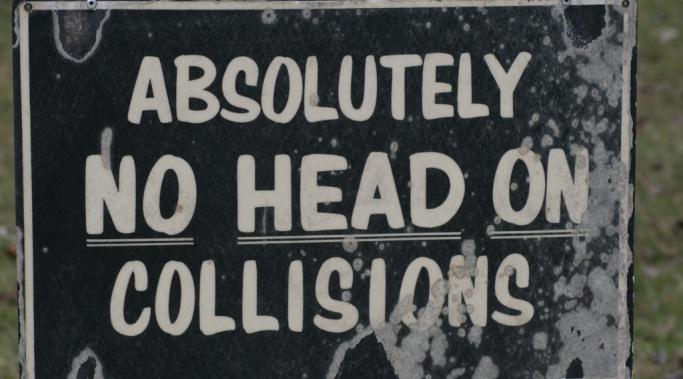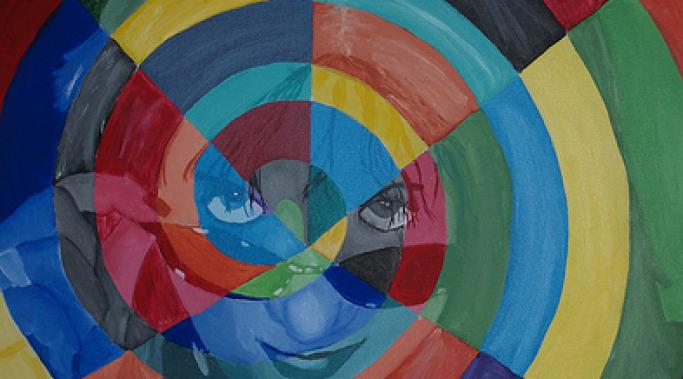Clarifying the distinction between relatively normal dissociation and relatively abnormal dissociation is important for a number of reasons, including: 1) understanding what Dissociative Identity Disorder is becomes easier when you can clearly identify what it is not, 2) describing symptoms like dissociative amnesia to others is less of a challenge when you start from a place they can relate to, and 3) those of us with DID could do with regular reminders that we aren’t aberrant life forms and, in fact, a good portion of our dissociative experiences aren’t as far-fetched to other people as we may believe.
Dissociative Living
There’s a space of six weeks between my last two posts here at Dissociative Living. Some of that month and a half disappearance has to do with the fact that I’d been trying to do too much for the better part of a year and I reached a kind of critical mass that left me depleted and in desperate need of rest. And some of it has to do with the nature of Dissociative Identity Disorder itself. It’s natural, within the context of DID, to compartmentalize one’s life to such a degree that the various arenas in which we live – work, school, friends, etc. – are separate worlds altogether. And when one or more of those worlds collide, as they inevitably do from time to time, the resulting anxiety triggers a full retreat from one or all of the affected worlds. But I’ve discovered that there’s more to these disappearances than I believed.
Nothing about dissociative identity disorder is quite what the most popular phrases used to describe it imply. “Losing time” is no exception. When we talk about losing time we’re talking about severe dissociative amnesia which, in a milder form, is something I believe everyone experiences. But the phrase “losing time” suggests a highly dramatic, easily recognizable aberration. In my experience, however, dissociative amnesia is startlingly surreptitious. It’s easy to be unaware that you’re losing time at all.
I just finished reading a young adult fiction series called The Hunger Games by Suzanne Collins. It’s a dystopian tale, set in an oppressive, violent, and nearly hopeless future. I recommend it solely because it’s a gripping, invigorating read -- but, as someone with both dissociative identity disorder (DID) and PTSD, there’s something special about The Hunger Games that impresses me: its remarkably deft portrayal of the immediate and long-term effects of trauma.
Yesterday, I came across a picture of a sign I’d taken several months ago while out shopping. The sign was under a display of eye shadow applicators that each contained two different colors and it read, “Split Personality – brings out the best in both of you.” Two shades of make-up, one for each personality. I’m sure someone fancied themselves terribly clever when they came up with that. But as much as I loathe the idea of suiting up with the PC police, I have to say that glamorizing Dissociative Identity Disorder to sell beauty products isn’t at all clever. In fact, I think that the pervasive use of mental illnesses as punch lines undermines efforts to promote understanding and support for people living with them.
I’ve discussed my difficulties with setting personal boundaries and some of what contributes to those difficulties. But it occurs to me that there may be a link between the high suggestibility of people with Dissociative Identity Disorder and the challenges so many of us face with personal boundaries. It seems reasonable that saying no would be more difficult for people who are particularly susceptible to the power of suggestion.
Like so many others with dissociative identity disorder (DID), I have comorbid posttraumatic stress disorder. But it isn’t the temporary response to short-lived trauma that most people think of as PTSD. It’s a deeper, more pervasive, and chronic response to life in general. This form of PTSD is called complex PTSD. And it occurs so often in conjunction with dissociative identity disorder, that I sometimes wonder if there's anyone with DID who doesn’t live with this monster.
When it comes to understanding Dissociative Identity Disorder, most people get too hung up on the concept of the alternate identity. Identity alteration is widely and mistakenly accepted as the essence of what DID is. And so the two most popular theories about the development of Dissociative Identity Disorder revolve around the existence of alters: the Broken Vase Theory, and the Multiple Vase Theory. Neither are satisfactory explanations for how DID develops and ultimately both theories' inaccuracies stem from the same error: the assumption that early childhood identity is cohesive and intact when in fact it is anything but.
One of the two most popular theories about the development of Dissociative Identity Disorder states that if you take a child with an intact identity and apply severe force for long enough, the child’s identity will splinter into pieces. I call it the Broken Vase Theory. I also call it wrong.
Despite reminder tools and sheer determination, I keep forgetting to take my medication. I get up in the morning and think to myself, 'Now don’t forget to take your medication!' while heading to the bathroom where it’s waiting for me in a brightly colored container right there on the counter. And I repeatedly discover, much later in the day, those pills lying untouched in their little compartments. I have dissociative identity disorder and this is just one example of how my dissociative memory affects my everyday life. On its own it may not seem like a big deal. And if my memory problems were exclusive to forgetting medication or if they were irregular, here-and-there occurrences they probably wouldn’t be much of an issue. But what I just described is how my memory works all the time, with everything.









